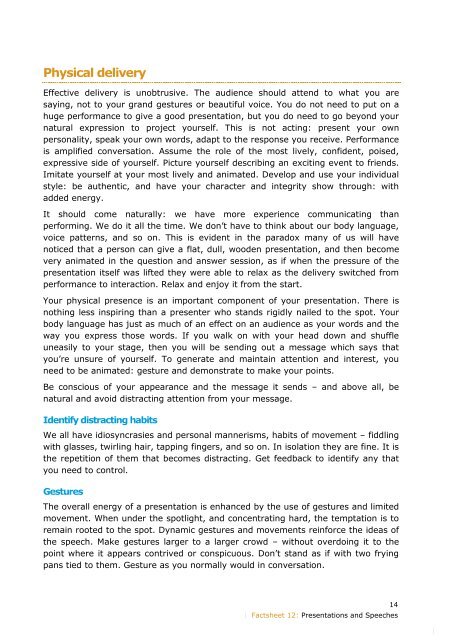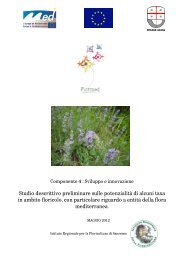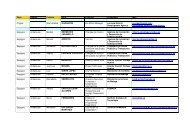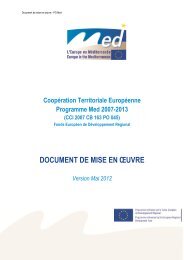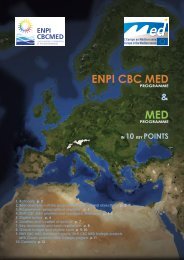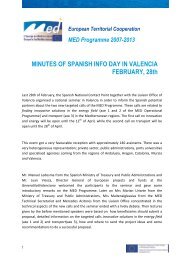MED Communication Handbook - Programme Med
MED Communication Handbook - Programme Med
MED Communication Handbook - Programme Med
You also want an ePaper? Increase the reach of your titles
YUMPU automatically turns print PDFs into web optimized ePapers that Google loves.
Physical delivery<br />
Effective delivery is unobtrusive. The audience should attend to what you are<br />
saying, not to your grand gestures or beautiful voice. You do not need to put on a<br />
huge performance to give a good presentation, but you do need to go beyond your<br />
natural expression to project yourself. This is not acting: present your own<br />
personality, speak your own words, adapt to the response you receive. Performance<br />
is amplified conversation. Assume the role of the most lively, confident, poised,<br />
expressive side of yourself. Picture yourself describing an exciting event to friends.<br />
Imitate yourself at your most lively and animated. Develop and use your individual<br />
style: be authentic, and have your character and integrity show through: with<br />
added energy.<br />
It should come naturally: we have more experience communicating than<br />
performing. We do it all the time. We don’t have to think about our body language,<br />
voice patterns, and so on. This is evident in the paradox many of us will have<br />
noticed that a person can give a flat, dull, wooden presentation, and then become<br />
very animated in the question and answer session, as if when the pressure of the<br />
presentation itself was lifted they were able to relax as the delivery switched from<br />
performance to interaction. Relax and enjoy it from the start.<br />
Your physical presence is an important component of your presentation. There is<br />
nothing less inspiring than a presenter who stands rigidly nailed to the spot. Your<br />
body language has just as much of an effect on an audience as your words and the<br />
way you express those words. If you walk on with your head down and shuffle<br />
uneasily to your stage, then you will be sending out a message which says that<br />
you’re unsure of yourself. To generate and maintain attention and interest, you<br />
need to be animated: gesture and demonstrate to make your points.<br />
Be conscious of your appearance and the message it sends – and above all, be<br />
natural and avoid distracting attention from your message.<br />
Identify distracting habits<br />
We all have idiosyncrasies and personal mannerisms, habits of movement – fiddling<br />
with glasses, twirling hair, tapping fingers, and so on. In isolation they are fine. It is<br />
the repetition of them that becomes distracting. Get feedback to identify any that<br />
you need to control.<br />
Gestures<br />
The overall energy of a presentation is enhanced by the use of gestures and limited<br />
movement. When under the spotlight, and concentrating hard, the temptation is to<br />
remain rooted to the spot. Dynamic gestures and movements reinforce the ideas of<br />
the speech. Make gestures larger to a larger crowd – without overdoing it to the<br />
point where it appears contrived or conspicuous. Don’t stand as if with two frying<br />
pans tied to them. Gesture as you normally would in conversation.<br />
14<br />
� Factsheet 12: Presentations and Speeches<br />
�


